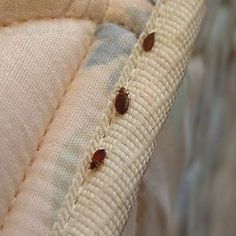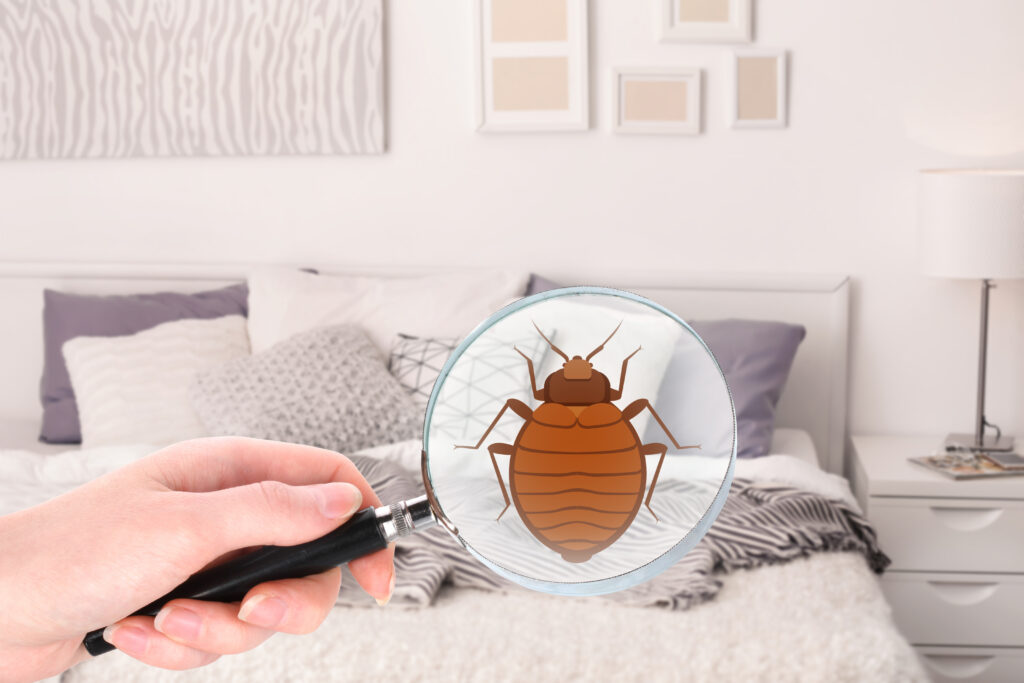Local Bed Bug Exterminator: DC Heat Treatment Providers Available
Local Bed Bug Exterminator: DC Heat Treatment Providers Available
Blog Article
Checking Out the Science Behind Bed Insect Heat Treatments as a Lasting Pest Monitoring Approach
One such approach that has actually gained traction in current years is the use of warm treatments to deal with bed insect invasions. The intricacies of exactly how heat properly removes bed insects and the more comprehensive effects for sustainable insect administration methods make this a subject worth exploring further.
Bed Pest Warmth Treatment Process

Thermal Death Factor for Bed Insects
Subjecting bed bugs to raised temperatures past their thermal resistance array is crucial for achieving efficient elimination in heat therapy procedures. The thermal fatality factor for bed insects refers to the temperature at which these parasites can not survive. Research indicates that bed pests begin to perish when exposed to temperatures above 113 ° F(45 ° C) for a continual period. As the temperature level enhances, so does the death rate of bed insects. At around 118 ° F(48 ° C ), bed insects begin to pass away quickly, with a death rate of virtually 99% within minutes of exposure. This shows the level of sensitivity of bed insects to heats and highlights the effectiveness of heat treatments in getting rid of infestations. By getting to and maintaining temperature levels above the thermal death factor for bed pests, insect management specialists can make sure detailed elimination of bed pest populations, consisting of hard-to-reach locations where chemical therapies might be much less effective. Recognizing the thermal death point for bed bugs is crucial for implementing successful warmth treatment strategies and achieving sustainable pest management outcomes.
Advantages of Warmth Treatments
Having developed the vital thermal fatality point for bed pests, it is essential to currently discover the significant benefits that warmth treatments offer in efficiently getting rid of these resilient bugs. One of the key advantages is that warm can permeate deep into gaps and fractures where bed pests hide, guaranteeing that also the most hard-to-reach locations are heated up to dangerous temperature levels.
Furthermore, warm therapies are ecologically pleasant and safe, making them a lasting pest management method. Unlike chemical pesticides, warm therapies do not leave unsafe residues that can this content present threats to human wellness or the setting. This facet is particularly important in sensitive environments such as health centers, schools, and residential areas where chemical use may not be preferable.
Additionally, warmth treatments have a high success rate in removing bed bug infestations in a single therapy, lowering the demand for several brows through and decreasing disturbance to owners. This performance not just saves money and time but also provides peace of mind to those managing bed pest issues.
Efficiency of Heat Therapy

Warm therapies have actually the added benefit of killing bed insect eggs, which are usually immune to traditional chemical treatments. In i thought about this general, the performance of warmth therapies in eradicating bed bug invasions makes them a sustainable and reputable parasite administration approach.
Sustainable Parasite Monitoring Advantages
Applying lasting parasite monitoring methods uses long-lasting benefits for both the environment and public wellness. By making use of techniques such as warm treatments for pest control, we can reduce the dependence on dangerous chemical pesticides that can have negative impacts on communities and human health - exterminator. Lasting bug administration strategies aid in protecting biodiversity by targeting specific parasites without hurting non-target organisms, thereby keeping a balanced ecosystem
In addition, sustainable parasite administration practices add to the overall health and well-being of the general public. By reducing direct exposure to hazardous chemicals used in standard insect control approaches, heat therapies provide a more secure alternative for bug management in household, commercial, and public areas. This reduction in chemical usage additionally helps in protecting against pesticide deposits from infecting air, water, and soil, safeguarding environmental top quality.
Conclusion
To conclude, bed pest heat treatments have actually been revealed to be a effective and sustainable pest management method. The thermal fatality factor for bed bugs makes them vulnerable to warm therapies, which have countless advantages over standard chemical therapies. The performance of heat treatments in getting rid of bed insect problems while decreasing environmental impact highlights the capacity of this technique as a lasting remedy for parasite control.
The bed bug heat treatment process includes elevating the temperature level within infested areas to a level that successfully gets rid of bed insects and their eggs. By getting to and preserving temperatures above the thermal death point for bed bugs, parasite administration experts can make sure detailed removal of bed insect populaces, consisting of hard-to-reach locations where chemical treatments may be less effective. One of the Full Report primary benefits is that warmth can pass through deep right into splits and gaps where bed bugs hide, ensuring that also the most hard-to-reach locations are heated to lethal temperature levels. Unlike chemical therapies that might leave behind resistant populations, warmth therapies use a non-toxic and environmentally pleasant solution that can pass through deep right into furniture, wall surfaces, and various other hard-to-reach areas where bed bugs conceal.
The thermal death point for bed pests makes them prone to heat treatments, which have countless advantages over traditional chemical therapies.
Report this page